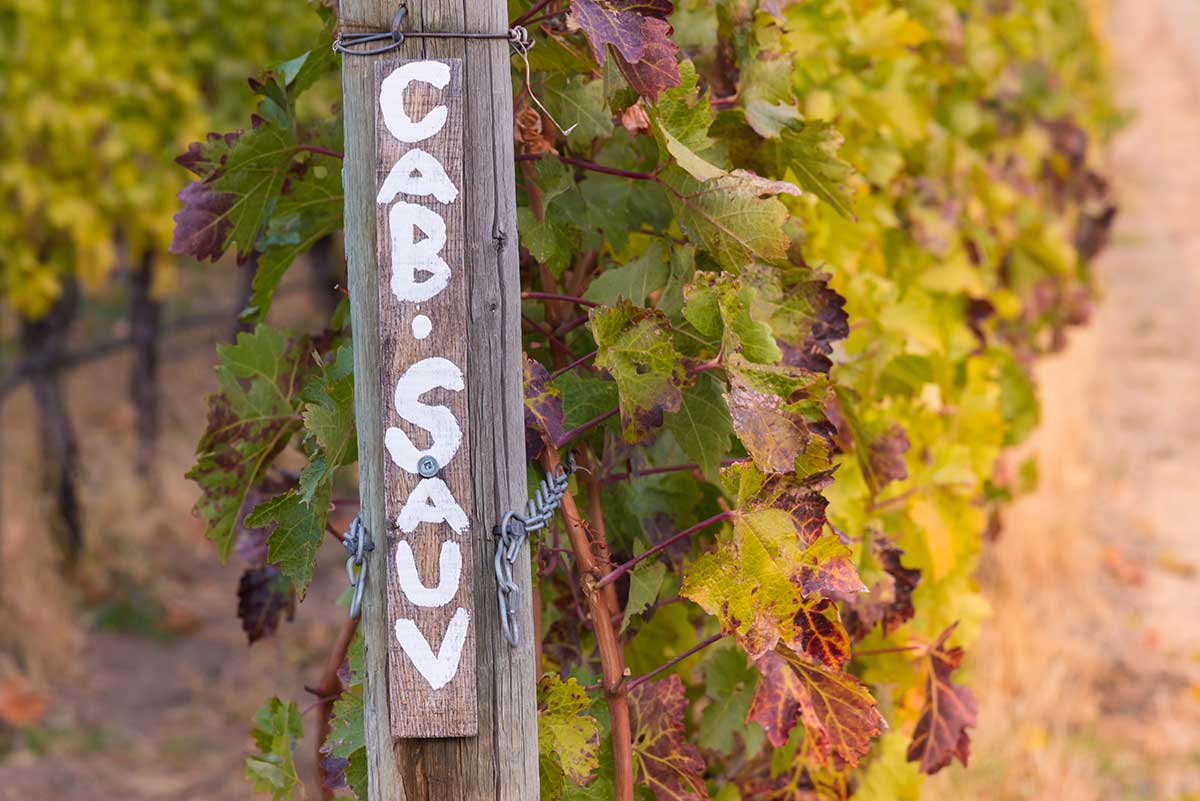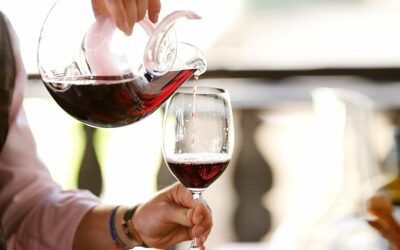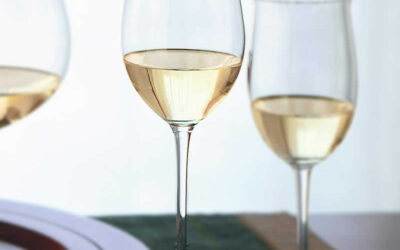Cabernet Sauvignon is one of those wines that elicits immediate anticipatory reactions in people. From lush and fruity to herbal, dark, and brooding, this grape can produce wines of great stature and layered complexity that can age for decades. Parented, oddly enough, by the white grape Sauvignon Blanc and the red grape Cabernet Franc, Cabernet Sauvignon blends the lovely pyrazines (savory herbal notes) of both parents as well as the red and black fruit of Cabernet Franc.
Grown all over the world, Cabernet Sauvignon is brilliant at expressing itself recognizably no matter the origin but with varying nuances based on the soil, climate, and aspect of its particular growing site. Best known from its original home in the Left Bank of Bordeaux, France, Cabernet Sauvignon hit the new world stage in the 1976 Judgment of Paris when Napa Valley’s 1973 Stag’s Leap Wine Cellars Cabernet beat out several top Bordeaux wines.
Cabernet from Napa Valley is known for its lush red and blackberry fruit tones while Bordeaux Cabernet is more restrained and herbal in nature. South Africa and Australia cover the range between herbal and fruity while Cabernet from Chile typically has a bell pepper tone to it.
Within California, Cabernet Sauvignon has its own myriad of expressions including bold fruit-forward wines from Napa’s valley floor, tightly-wound berry-driven mountain wines from Spring and Howell Mountains and Sonoma’s more restrained but charming red-fruited versions. Further south in Santa Barbara’s Happy Canyon, Cabernet takes on a savory character amid all of its glorious fruit. These are, of course, generalizations but the point is that Cabernet Sauvignon has an expression for everyone somewhere in the world.

Cabernet Sauvignon prefers soils that drain well such as the gravel soils of Bordeaux and the volcanic gravel-loam soils of Napa Valley. It needs sun and heat to fully ripen and to showcase its trademark red and black fruit flavors. In cooler climates such as Bordeaux, its herbal nature more readily appears.
As Cabernet Sauvignon is one of the last grapes to ripen, Cabernet Franc and Merlot were often planted alongside it in Bordeaux in case there wasn’t enough heat to fully ripen the Cabernet Sauvignon. This is how Bordeaux blends came about as the three grapes were (and still are) often mixed together, both for taste and, in older times, because it was a bit of an insurance policy to ensure something ripened. Incidentally, Petit Verdot and Malbec are other permitted varieties that can be blended with Cabernet Sauvignon in Bordeaux.
South Africa is also particularly good at Bordeaux blends making some of the nicest Cabernet-based blends I’ve tried. Australia tends to blend Shiraz and Cabernet Sauvignon together and you’ll also see Cabernet in “Super Tuscans” from Italy. The latter are typically some combination of Sangiovese, Cabernet Sauvignon, Merlot, Cabernet Franc., and Syrah.
In the winery, Cabernet Sauvignon produces densely colored purple and ruby-colored wines due to its thick skins. Being a late-ripener, it gets a lot of sun and warmth which can boost its sugar level and therefore its alcohol level with more growing time. Typical Cabernet Sauvignon ranges from 13.0 to 15.5% alcohol depending on its origin (usually the warmer the climate, the higher the alcohol). Cabernet berries are small with a higher ratio of seeds to pulp than many other grapes. This results in robust tannins which are helpful in aging as is its ample acidity.
Cabernet Sauvignon has had a long love affair with oak of all kinds (French, American, Slavonian, and Hungarian to name a few). Often aging 18-24 months in oak barrels, Cabernet Sauvignon marries readily with oak which creates additional nuances of sweet spice, cedar, vanilla, and toast. All of these factors can result in long-lived wines of great complexity and character in quality Cabernet Sauvignons.
Depending on the producer, vintage, and quality of the wine, Cabernets can age anywhere from 2-40 years. While some entry-level wines are made to consume immediately (usually at lower price points), many mid-market wines will easily last 3-5 years. Higher-end Bordeaux and Napa Valley Cabernets can last decades depending on how they’re made and the vintage they came from.
Cabernet Sauvignon is also versatile with food spanning the gamut of steak, pork, hamburgers, stews, and roasted vegetables (which enhance its herbal nature). Gorgonzola and gouda are also easy pairings as is chocolate (particularly dark). Best served between 60-65 degrees temperature, Cabernet continues to evolve once opened delighting with a plethora of flavors. Using a bigger-bowled glass is best in order to draw out all of these nuances.
Typical Cabernet flavors range from brambly raspberry, blackberry, and black cherry to menthol, cedar, and tobacco in older wines. A vibrant herbal backdrop often supports these flavors to round out the palate profile.
Cabernet Sauvignon was the first wine I fell in love with years ago when I discovered wine. Freemark Abbey was my “first crush” (no pun intended) and I still love their Cabernets today. Jordan is consistently very good with many other mid-tier wines such as Simi, Sequoia Grove, Arrowood, and St. Francis easy choices. Moving up the price chain, Turnbull, Star Lane, Sbragia, Lancaster, and Spoto are some of my other favorite producers. Wendouree from Clare Valley, Australia is “the one that got away” as it’s nearly impossible to source in the U.S. but that’s its own category.
The depth of possibility with Cabernet Sauvignon is endless, both in its differing site locations and expressions. Each year brings new weather patterns and, with them, the birth of more exciting Cabernets to try. I’ve never tired of this variety in the thirty years I’ve been drinking it and I suspect you won’t either once you get started.

Stacy Dalton
Wine Expert




